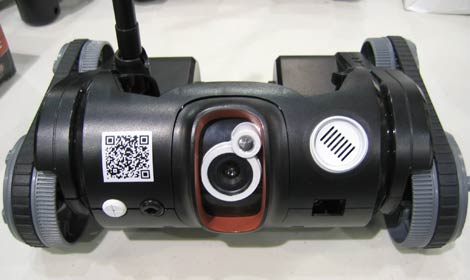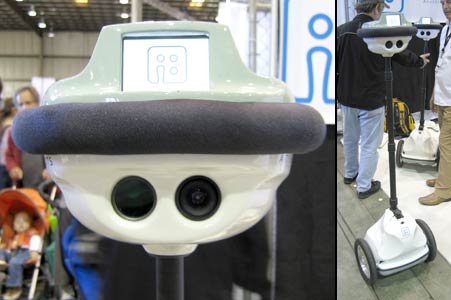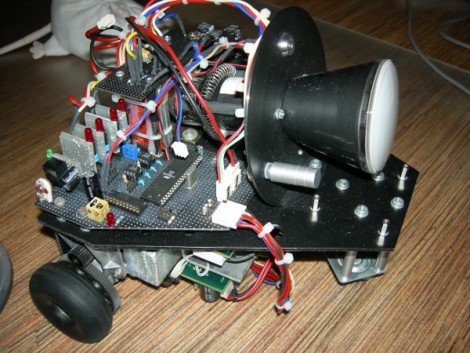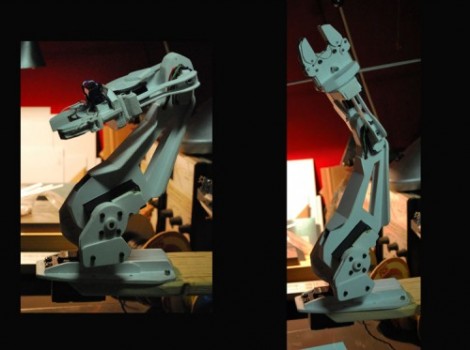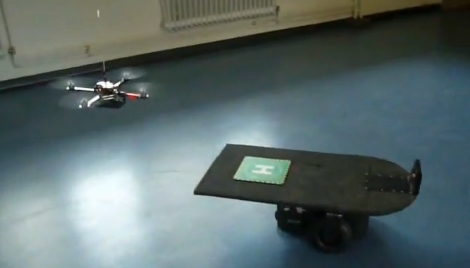
[Karl-Engelbert Wenzel] developed a UAV capable of taking off and landing on a moving platform autonomously. The platform operates aircraft-carrier-style by driving around the room in circles. The quadcopter tracks a grid of IR LEDs at the front of the landing deck by using the IR camera from a Wii remote. The best part is that the flight controls and processing are all done by the copter’s onboard ATmega644 processor, not requiring a connection to a PC. The landings are quite accurate, achieving a maximum error of less than 40 centimeters. In the video after the break you can see the first landing is slightly off the mark but the next two are dead on target.
So build yourself a mobile platform and pair it up with your newly finished quadcopter to replicate this delightful hack.
Continue reading “Aircraft Carrier Is Moving Target For Autonomous Quadcopter”

